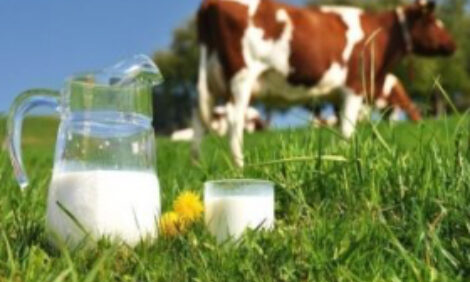



Maximise Value Of 2011 Calf Crop
Producers soon will be weaning calves and finalising marketing decisions. North Dakota State University Extension Service beef cattle specialist, Carl Dahlen, discusses how producers can capture the most value from their calf crop. "For producers to capture the most value from their calf crop, they need to follow a carefully planned marketing strategy," says Carl Dahlen.
Here are four strategies to maximise calf crop value this year:
- Start with a uniform group of calves.
- Implement a sound herd health program.
- Consider age and source verification.
- Talk with your auction market representatives.
The sale price almost always is greater for a large group of high-quality, uniform calves than similar-quality calves brought to the livestock auction in smaller groups or similar calves with more weight range variation.
High-quality genetics and groups that are uniform in color, frame, muscling, flesh and weight range are essential to add value to a group of cattle. To improve calf uniformity, concentrate on purchasing high-quality breeding stock, managing breeding seasons to create a tight calving window (consider a 45-day breeding season) and possibly culling late-calving cows.
"Implementing a sound herd health programme is the easiest way to add value to the calf crop, but it has to be done correctly," Mr Dahlen advises.
"Calves must receive the correct vaccines at the correct time."
Vaccines calves receive as they walk onto the truck do not have a large impact on the price buyers are willing to pay because most cattle will be revaccinated upon arrival at a feedlot. However, producers who vaccinated calves two to three weeks prior to weaning and followed all Beef Quality Assurance (BQA) procedures are more likely to be rewarded with higher prices.
The type of vaccine cattle receive also can impact the price. Cattle feeders are looking for calves that have received a modified live vaccine. Many feeders are not happy with the protection from a killed vaccine.
Recent sales have shown price swings of $5 to $8 per hundredweight for the same quality of calves, depending on vaccination status, with higher prices paid for vaccinated calves. Consult with your veterinarian about the vaccination strategy appropriate for your herd.
Even one year ago, auction market staff had not received a lot of requests for age and source verified calves or special age and source verified sales.
"However, 2011 is a different story," Mr Dahlen says.
"This year may prove to be the most beneficial year to date for producers who age and source verify their calves. As long as Japan restricts imports to less than 21 months of age, the demand for age and source verified calves will remain strong. But the process for verifying calves does not happen overnight."
Producers should be proactive, initiating and following through with the age and source verification process. They need to have records in place and start the paperwork well in advance of the sale to properly verify the age and source of calves.
Mr Dahlen recommends producers talk to a third-party certification agency to learn if their calves and records qualify for age and source verification. Similar organizations can help producers certify that their calves are suitable for natural and organic markets. For a list of third-party certification agencies, visit http://www.ams.usda.gov/AMSv1.0/getfile?dDocName=STELPRD3320450.
"I encourage producers to spend time evaluating production costs and returns to ensure that they are obtaining a sufficient premium when marketing under a natural or organic label, compared with managing and marketing calves in traditional markets," Mr Dahlen says.
Auction market representatives can be great resources for producers with questions about improving the value of their calf crop. The market representatives deal with questions about feed yard preference for calves, status of calf supply and demand, whether feedlots are running at capacity and the latest market trends daily, whereas many cow-calf producers evaluate these questions once a year.
In addition, auction markets may offer their customers alternative marketing avenues, such as special sales, Internet sales and video auctions.
Producers should remain in contact with auction market staff and be flexible in their marketing strategy, according to mr Dahlen. Consign cattle well in advance of the sale and let the auction market know as much about the calves as possible (for example, what color they are, when they were born, when they were vaccinated and whether they are age and source verified). The more information the auction market has, the better job it can do of marketing those calves.
In addition, producers should ask auction market representatives about other ways to improve their cow herd and calf marketability.
"No silver bullet will make you consistently top the sale each time you sell calves," Mr Dahlen says.
"Concentrate on creating a uniform set of calves with cows that work in your environment. Manage your herd with good BQA practices, vaccinate in a timely fashion, age and source verify if the market is rewarding the effort, and remain flexible with marketing strategy and dates."


